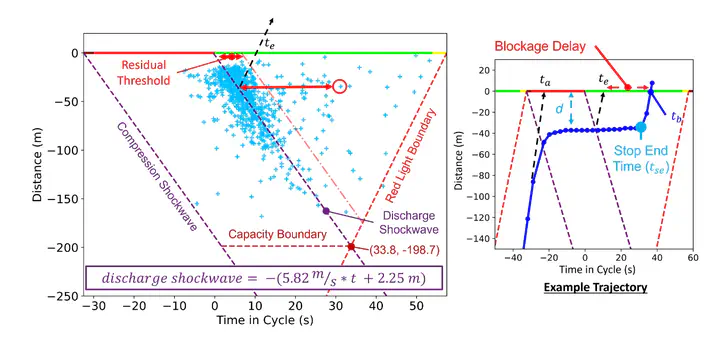A Signalized Intersection Performance Code Using Vehicle Trajectory Data
 Co-Simulation for Large-Scale AV Deployment
Co-Simulation for Large-Scale AV DeploymentAbstract
This paper presents a uniform method for evaluating intersection traffic congestion from vehicle trajectory observations through a Signalized Intersection Performance Code (SIPC) - a time-space diagram segmented based on the dynamics of queue formation and dissipation in response to traffic signal control. Vehicle trajectories plotted on this time-space diagram can give insights into overall traffic congestion based on their behavior within each segmented zone of the SIPC. This paper demonstrates applications of the SIPC that quantify the impacts of conflicting movement blockage on traffic signal performance measures in permissive movement and spillover scenarios. These blockages impact the normal dissipation of queues, so the trajectories influenced by such blockage can be easily identified on the SIPC. New performance measures are introduced that modify the current state-of-the-practice by determining if the control delay, number of stops, and split failures were caused by blockage or queues formed during the red light phase. The measures were collected from SIPCs plotted at six intersections with different intersection geometries and phase operations. The SIPC also makes it easy to visualize split failures, especially those caused by blockage in the first cycle and do not exhibit a second stop. Despite the limited number of vehicle trajectory observations available in practice, the SIPC helps transportation engineers visualize how these trajectory observations can give insight into the complete traffic state.